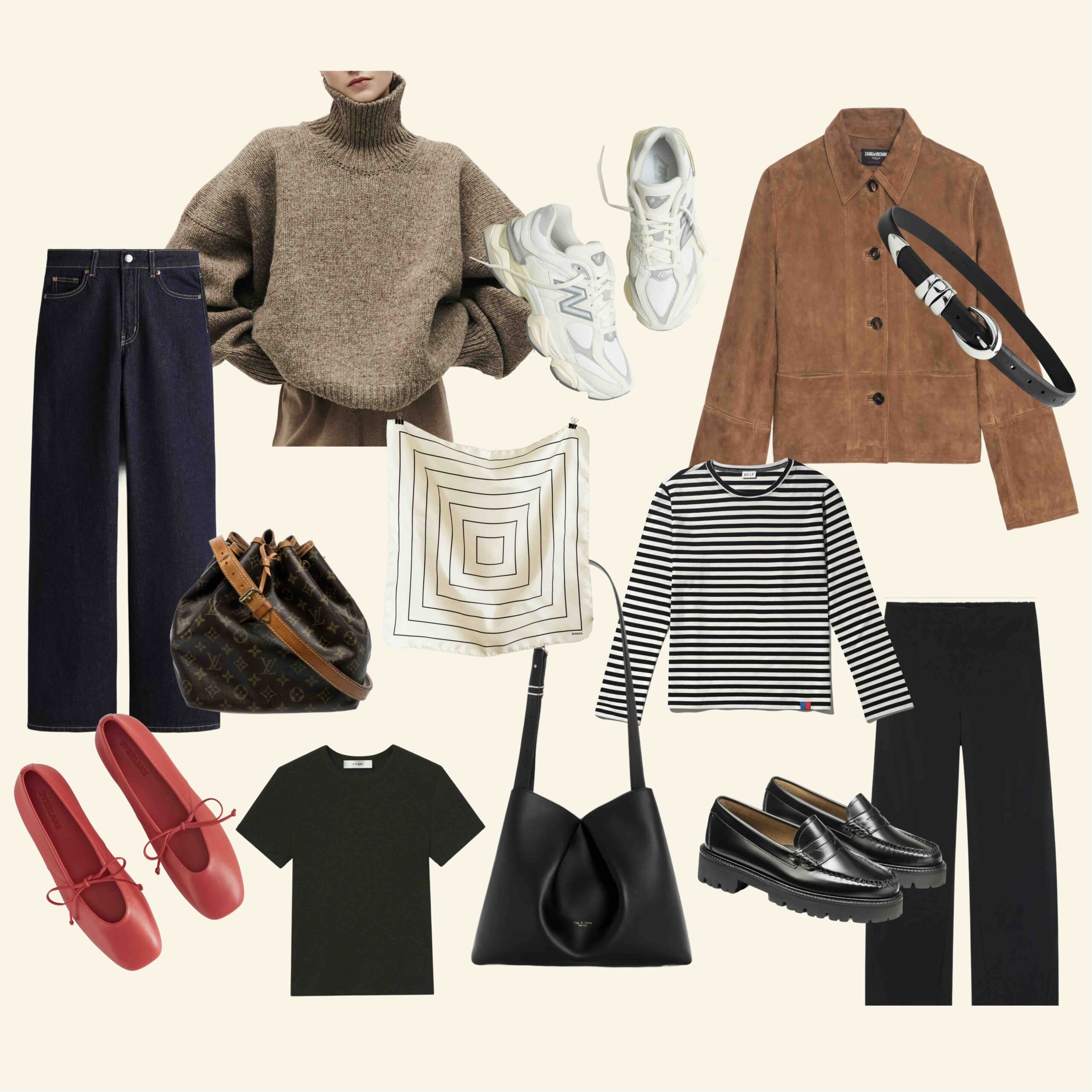

Why can it be so hard to pick and visualize the right piece of furniture, the right decor, or the right layout for a space?
This is a question I’m asked often, in varying forms. As I’ve come to realize over time, there’s inherent friction when you make decor decisions, because each decision you make will affect the rest of your decisions. I think that friction is why so many of us (myself included!) have experienced decision fatigue at one point or another while designing a space.
Today I’m sharing how to make a mood board for a room.
Creating a mood board will help provide a framework so you can see the whole of your design—a bird’s eye view, if you will—so you can feel more confident in making each design decision as you go. The goal is to create an overall aesthetic in a room rather than focusing solely on bringing in your favorite individual pieces. It’s about the tactical application of selecting a variety of items that will work well in the space and then using a mood board to ensure you have all the parts and pieces you need to bring the design to life. For example, you might like a credenza on its own, but when you look at the way an entire room looks together, you may pick something different that works better with the whole.
Without further ado, let’s dive into the process.
2 Things to Consider Before You Begin
- It’s helpful to have an idea of the overall color palette you’ll be using before you go into the process. I won’t be detailing that decision process today, but you can refer to our design color theory guide for more info.
- It’s helpful to work through this process by hand rather than on a screen, if at all possible, and to create your mood board in the room you’re designing. However, if you don’t have a printer at your disposal, this process can also be done digitally using a platform like Canva.
How to Make a Mood Board for a Room
1. Measure your space.
I think one of the steps folks miss when designing a room is focusing on the function of the space and what actually makes the most sense given the dimensions. This is where measuring your space comes in handy. I suggest doing this at the onset of any design project, to really begin to give yourself a true sense of scale and a sense of which layout and pieces will work well in the space.
2. Decide on a general layout.
The layout should be based on what works best for your lifestyle and the flow of the room. To do this, I’ll create a digital floor plan (I use floorplanner.com) using the measurements I’ve taken. Having a floor plan helps to inform the size of furniture that will fit within the space and the layout options that are possible. Once you have an overall layout you’d like to work with, you’re ready to move to the next step.
3. Choose key furnishings and design elements.
At this point, you don’t need to have determined exact pieces or materials—you just need to know dimensions and the type of furniture that will work well within your layout. You’ll hopefully have an idea of how the decor will be distributed throughout the space but you won’t have it finalized yet.
Bring in lots of different options in terms of colors, patterns, etc.—these items will be the things you’ll choose from as you create your mood board in the following steps. There will be a number of pieces and combinations you’ll love but the one you ultimately land on will balance budget, accessibility, the needs of your family, and what works best within the structural framework that already exists in your space.
4. Pull together all of your inspiration.
Gather your inspiration in one place—samples, printed photos of things you want to buy, and printed photos of things you already have in the space that won’t be changing.
5. Organize your inspiration by category.
Categories will include flooring, lighting, furniture, textiles, etc. This will help you sort through everything and make decisions more readily.
6. Select your main design piece.
Now it’s time to edit down your inspiration. First, decide on a main piece that’s going to ground the overall design. It will likely be a piece of furniture, a large piece of art, or a large rug (for me, in the green room design, it’s a large green sectional). Put the printed photo or sample of that piece in the center of a flat surface (or in the center of your screen, if you’re working digitally); this is where you’ll be organizing your mood board. This piece will be your starting point for the other design elements. It will help you to remove decor options that don’t quite fit alongside it (even if you love them on their own) and highlight the decor pieces that work well.
It’s helpful at this point to set a photo or sample of any other key elements of the design that won’t be changing (wall color, floor material, etc.) right next to the photo or sample of this main piece. This will allow you to really begin to visualize how everything works together.
7. Begin to design around the main piece.
Add in other elements based on size and scale. Arrange them spatially on the surface in a way that helps you visualize how each element will work with any adjacent elements. The next element I added to this mood board was our rug, given the large scale of the rug within the room.
As you go, you’ll begin to visualize different concepts you can follow for your design, and other elements will start to fall into place as you work through each decision.
8. Continue refining your mood board.
Add decor elements and furnishings based on what works best for the space as a whole until you reach a point where it feels “complete.” As you work through this process, add elements in order of size and/or visual impact, from the pieces that have the most visual impact in the room (e.g., a central sofa, a large rug, an eye-catching piece of art) to those that have the least visual impact. Consider how colors, textures, and other elements will work with each other, and remember to create space for areas of visual rest throughout the design, so there’s room for each piece to breathe and shine on its own.
This mood board process is ultimately meant to create a design that works for your current needs for any given room, but it’s helpful to keep in mind that the design of the room will continue to evolve as your needs for the space change over time. This process is, at its core, quite personal to you and your space, but I hope this breakdown helps provide an initial framework for you to create a mood board of your own and get to the heart of your design.
Want more info on creating a mood board? Head to this IGTV, where I talk you through the process step by step.


Kate is the founder of Wit & Delight. She is currently learning how to play tennis and is forever testing the boundaries of her creative muscle. Follow her on Instagram at @witanddelight_.
BY Kate Arends - March 16, 2021
Most-read posts:
Did you know W&D now has a resource library of Printable Art, Templates, Freebies, and more?
take me there
Get Our Best W&D Resources
for designing a life well-lived




Thank you for being here. For being open to enjoying life’s simple pleasures and looking inward to understand yourself, your neighbors, and your fellow humans! I’m looking forward to chatting with you.
Hi, I'm Kate. Welcome to my happy place.
















Like what you see?
Share Wit & Delight with a friend: